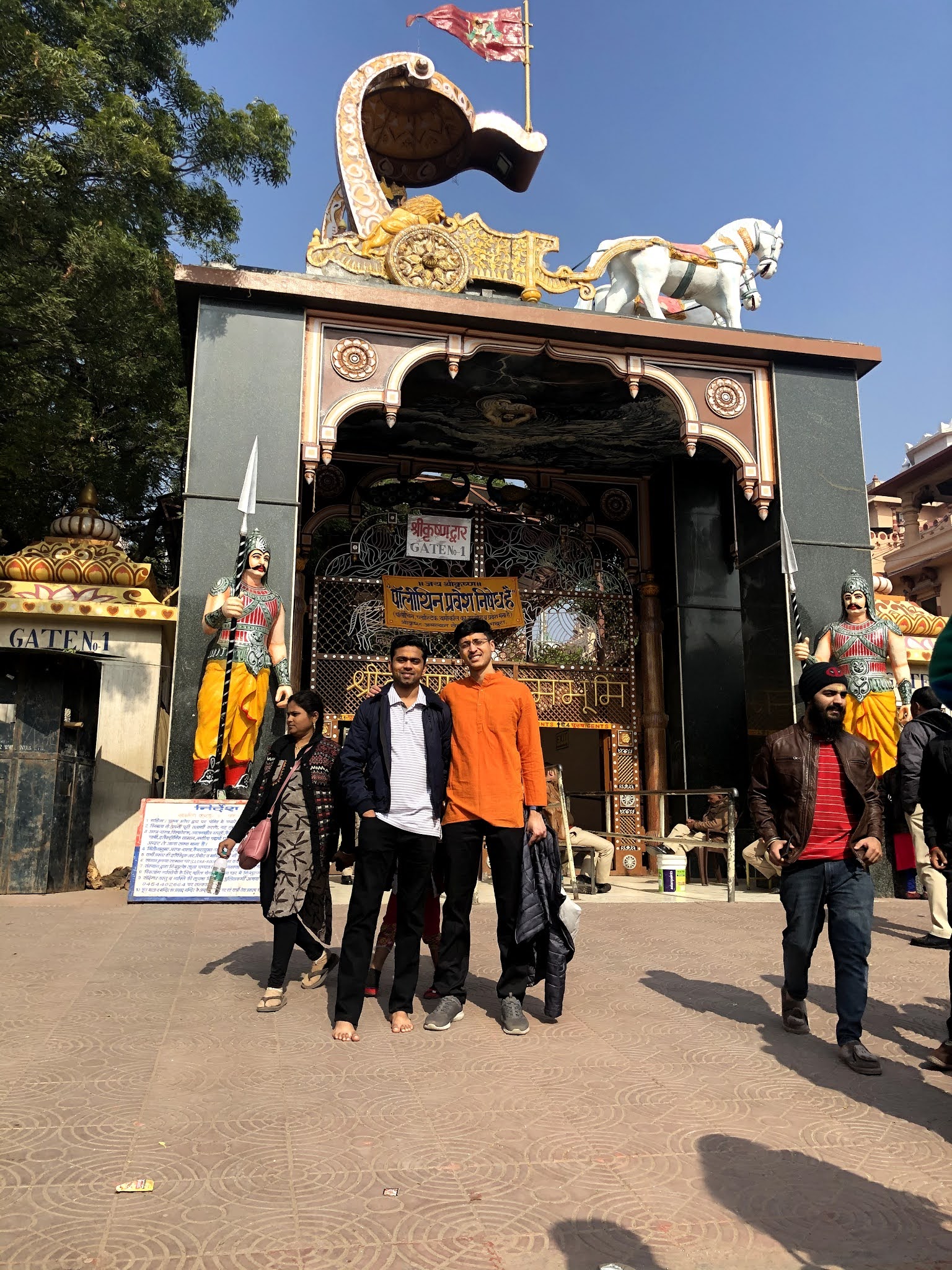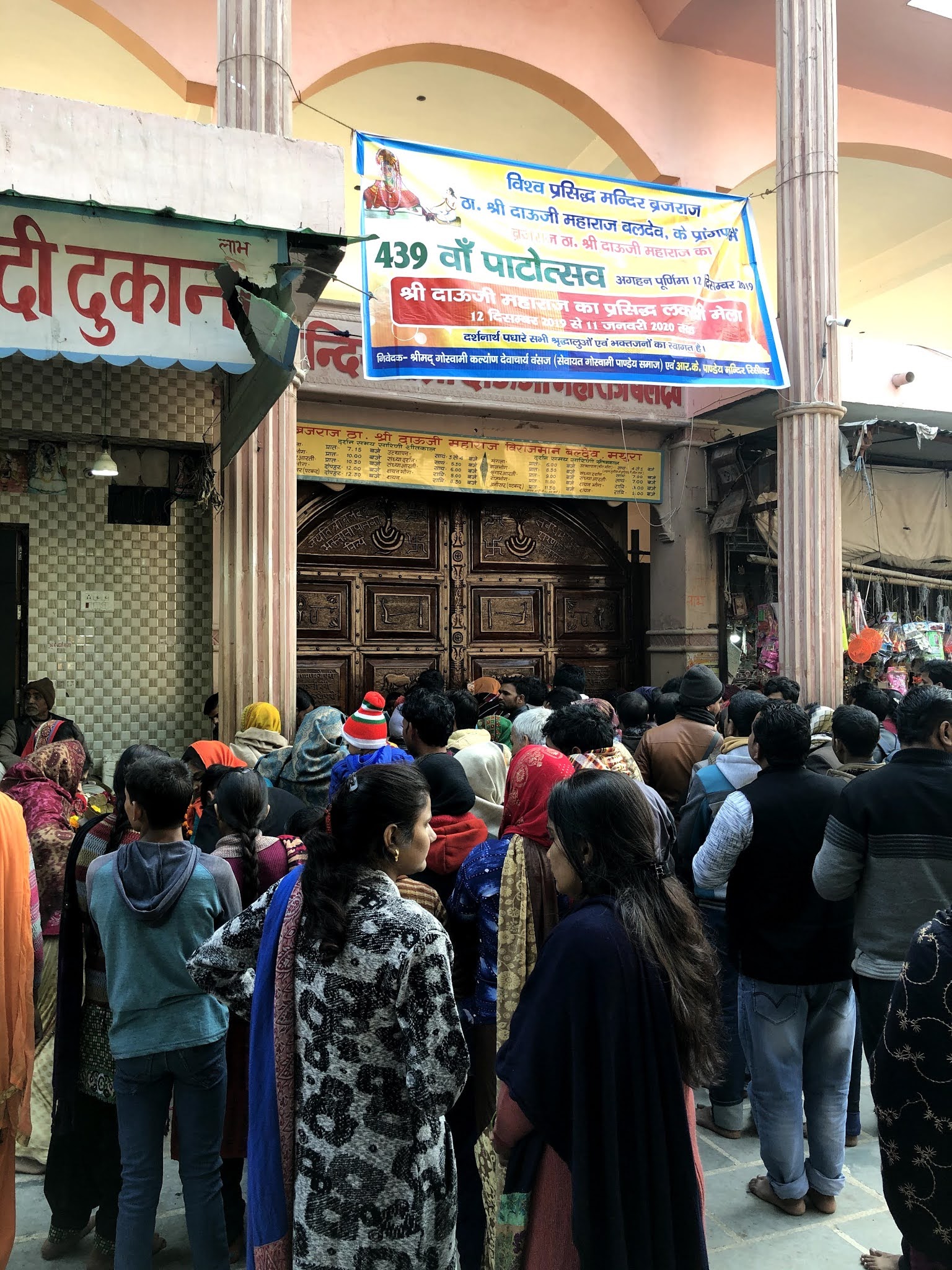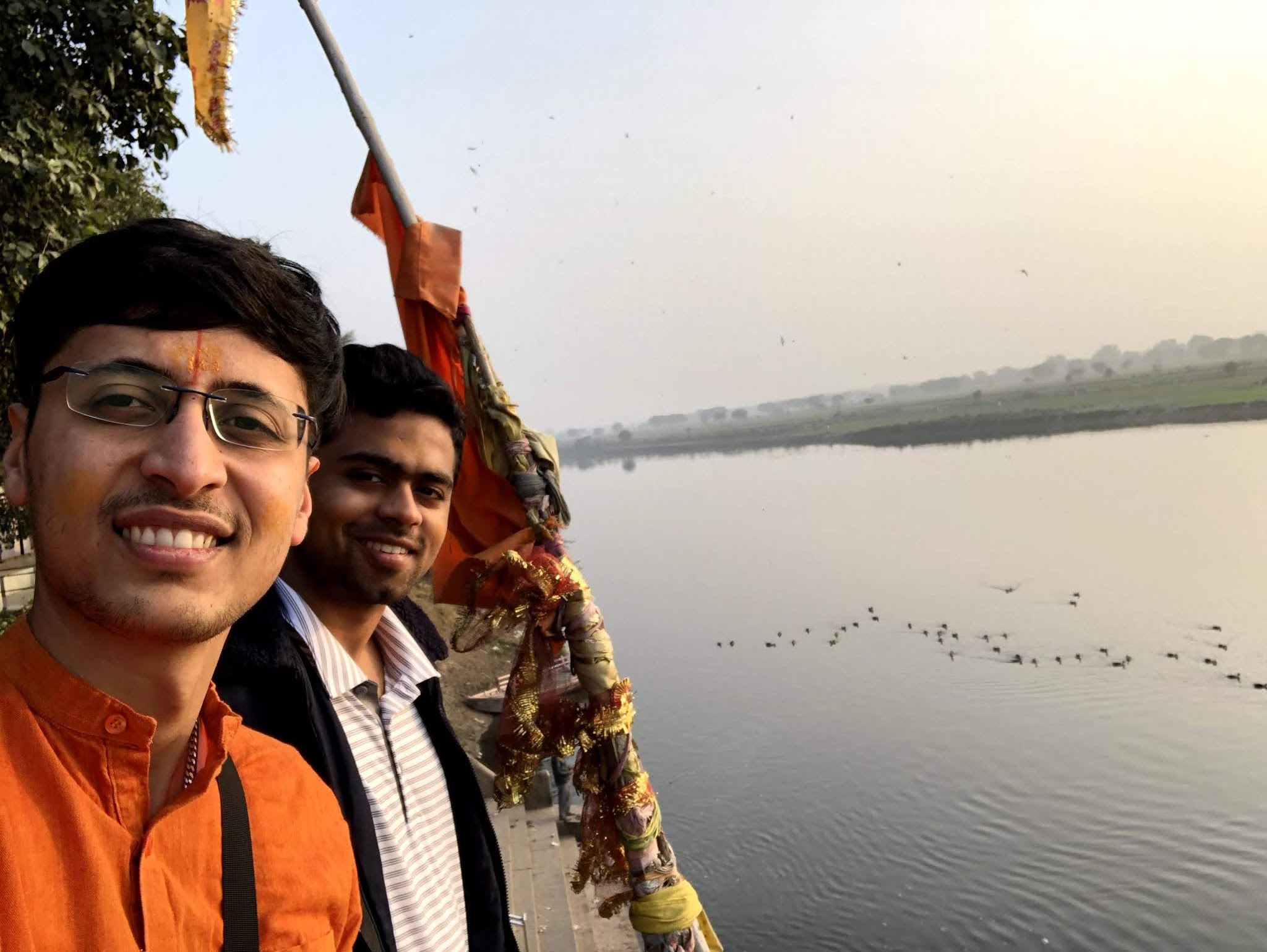Quest for 108 - Part 4 (Mathura-Gokul Divya Desams)
The Story
I’ve been lagging behind on documenting my experiences in visiting Divya Desams. Covid isolation is, in theory, supposed to give one more time to indulge in their favorite pastimes. But, it hasn’t worked out so well in practice. In this part 4 (you can refer to parts 1, 2, and 3 here, here, and here respectively), I will cover two temples I visited in Mathura and Gokul in December 2019. That trip included traveling to many other places as well, and you can read the entire story here.
Accessing these temples can best be done by hiring a cab/auto in the town of Mathura. They are familiar with not only these temples but all the temples in the Mathura/Vrindavan area. My friend and I took the services of Ram Bhai, who owned a tourist agency in Mathura and chauffeured us around town. We reached Mathura via train from Delhi, but there are plenty of other ways to travel there as well. With these temples, my count increases to 32.
The temples
Unlike the temples down south, the two Divya Desams I visited here (Thiruvadamathurā and Thiruvāipādi) were built more recently. This was because the original temples were destroyed multiple times by invaders. It is the beauty of Sanātana Dharmā that the sthānam (place) is considered holy, irrespective of whether or not a temple or mūrti exist in that spot. This is why Hindus continued to revere and worship in these places for centuries despite being repeatedly vandalized.
1. Thiruvadamathurā - Sri Govardhana Nesa Perumāl Temple
Known popularly as Krishna Janmasthān, this historic Mandir lies on the banks of Yamuna. It has been of religious significance for thousands of years. We went by cab and first visited Potra Kund, a historical stepwell fed by the Yamuna river, before heading to the Mandir. I took this to be the temple pushkarani. Interestingly both the Govardhan hill and this temple are together considered to be Thiruvadamathurā.

The security check here rivaled airports as no electronic items were allowed in. As we ascended the stairs and turned to look at the Mandir, I witnessed a sight I could never have imagined. An imposing Mandir and an equally impressive Idgah stood right next to it. I had a flashback in my head of all the books I’d read on these areas' Islamic invasions. Still, nothing could have prepared me for this experience. It was one of those moments when the weight of history can truly be felt.

The Mandir itself was spectacular with a glowing Radha-Krishna, full of tales from the Puranas on the walls and the ceilings. From there, we went to the adjoining cellar, where Krishna was born in a jail. At the entrance, we were given a grim reminder of the 1000 year battle for our civilization on the information slab. It noted the history of this temple being destroyed multiple times, starting with Ghaznavi and ending with Aurangzeb and being rebuilt every time.
The Idgah stands on top of where the temple once stood while the jail cellar is underneath the mosque. It was a surreal experience to walk through it and out.
Factoids -
Main deity - Govardhana Nēsan/Balakrishnan.
Mentioned in Prabhandam by - Periyazhwār, Āndāl, Thondaradipodiazhwār, Thirumangaiazhwār & Nammazhwār.
2. Thiruvāipādi - Sri Navamōhana Krishna Perumāl Temple
Popularly known as Gōkul or Gōkulam, the concept of the sthānam being of primary importance was even more pronounced in Gōkul. There were many small temples in the area, the original having been destroyed long ago. I visited all the temples in this area, which together constitute Thiruvāipādi.
First, we headed to Shri Giriarj temple. In this place, Krishna grew up with Yashodha, Vasudev, and the rest of his family. Gokul seemed even more rustic than Mathura but with the same spirit. We had darshan of Krishna, Yashodha, and Lord Balarama, also affectionately known as “Dau Ji,” in these parts (Lord Krishna is referred to as Thakur Ji here). The priest asked us to laugh after we received the prasad to symbolize our delight in consuming it.
What was gut-wrenching to witness was the Yamuna herself. It looked like we had stepped into Iceland with some floating glaciers around, as the river was full of chemicals frothing on its top. Ram Bhai informed us that it was due to effluents from neighboring industries. The saving grace was not all parts of the Yamuna looked this way.

The streets here were tiny and home to a variety of animals and birds. People and other living beings were in harmony, day in and day out, casually going about their business.
A short ride brought us to Thakuraani ghat, adjoining another temple dedicated to Dau Ji - Shri Dau Ji Maharaj Virajman Baldev Mandir. This temple was open only for 20 minutes in short periods. We witnessed a very enthusiastic set of devotees here.

We then set out to a third temple in Gokul adjoining Brahmānd Ghat, the Brahmand Vihari Mandir. This is where Krishna swallows butter and opens his mouth to show Yashodha His entire creation. The Yamuna here was cleaner, so we spent some time paying our respects and clicking photographs of the surroundings.
Factoids -
Main deity - Navamōhana Krishnan.
Mentioned in Prabhandam by - Periyazhwār, Āndāl and Thirumangaiazhwār.
In the next part, we head back south, and I will cover temples in Kumbakōnam.
Originally published here.